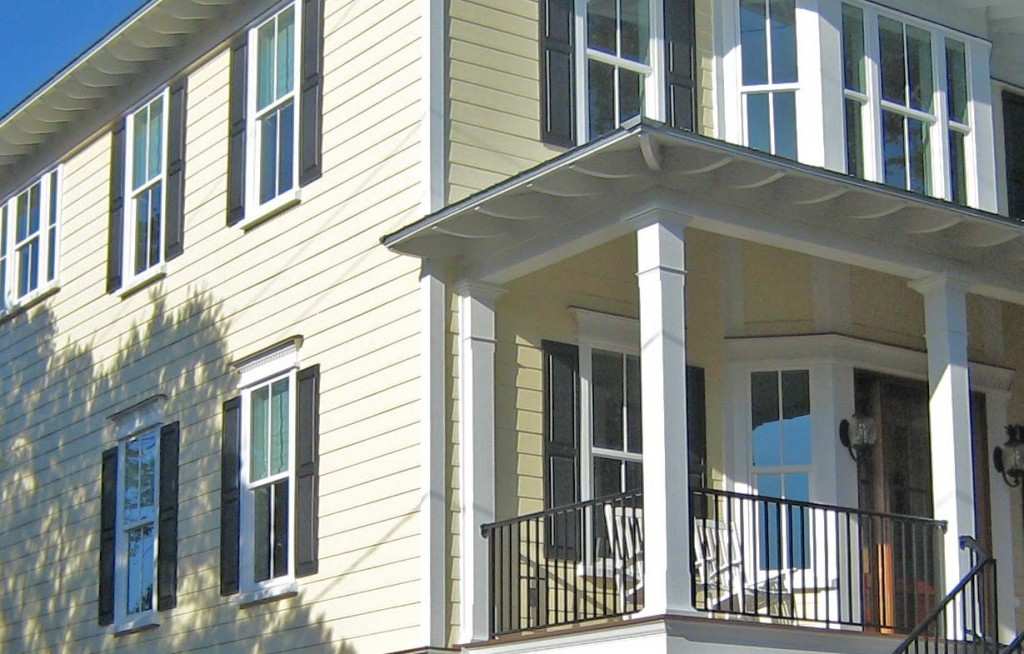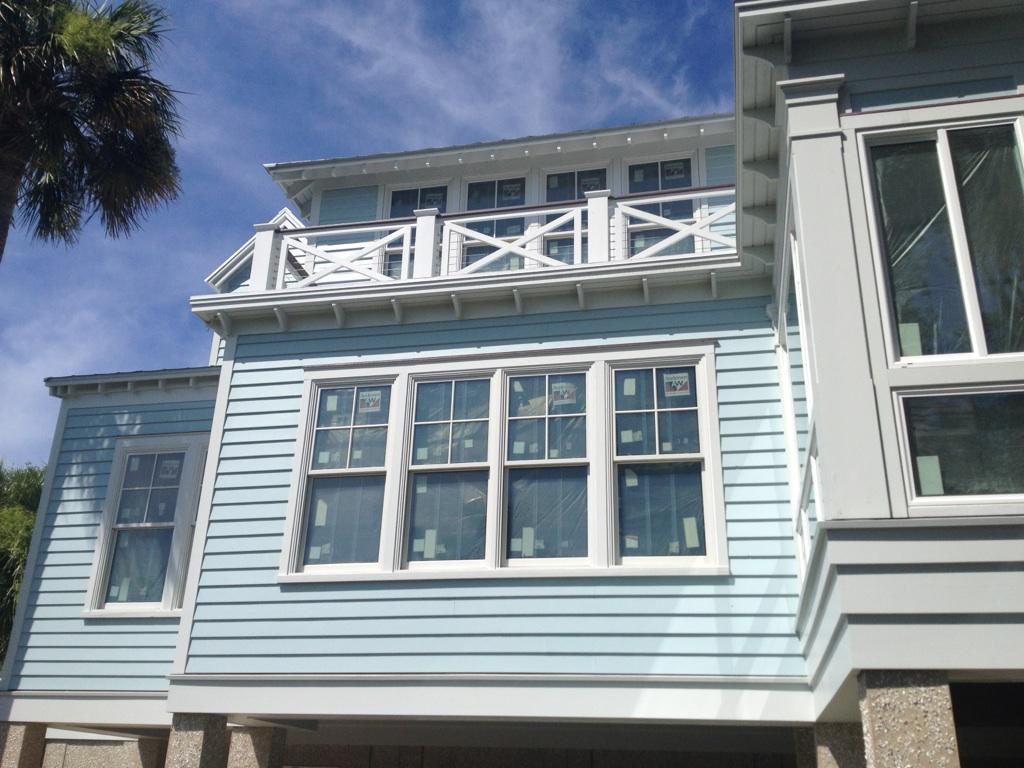Brick Versus Hardi Siding
Most homeowners have no idea what to expect when it comes to the pros and cons of using brick versus hardi siding on their home. This article discusses the advantages and disadvantages of using brick versus hardi siding while looking at labor and material costs, installation time, thermal properties, sound attenuation properties, maintenance and upkeep, and structural stability of both brick and hardi siding. The goal of this article is to allow the everyday homeowner or someone thinking of building a new custom home or remodeling an old home some valuable starting knowledge in regards to the pros and cons of brick versus Hardi siding.
Before jumping into the costs of the materials, some background information needs to be understood about Hardi plank (or Hardi siding) materials. Hardi siding comes predominantly in two thicknesses. Both thicknesses are available in a rough and smooth finish. The finish is completely an aesthetic decision and has a negligible affect on the cost of the product. The "Regular" Hardi siding is 5/16" thick, and is available in widths ranging from 5 1/4" to 12" wide. The ends are "butt" cutt, leaving butt joints when installed. "Artisan" Hardi is the newer product and is more expensive than "Regular" Hardi. "Artisan" Hardi siding is 5/8" thick and comes in the same array of widths as regular Hardi siding. The ends are tongue and groove which makes for a tighter connection where planks meet when installed. Aesthetically, "Artisan" Hardi is thicker and look more like real wood siding. The end joints caulk and paint much better and are much less noticeable when viewed from the exterior of the home. Both Hardi profiles are available with or without a "bead" which gives the siding a little more character. The first picture below is a photograph of a custom home that Sea Island Builders built on the Isle of Palms, SC using "Regular" Hardi siding with a bead (the bead is just above the siding's lap joints and hardly visible from a distance).
Regular hardi siding on Isle of Palms home

The picture below shows a home in Wild Dunes on the Isle of Palms, SC where the homeowner's decided to use the thicker Hardi "Artisan" siding. The Hardi "Artisan" material itself costs roughly twice as much as the regular Hardi siding.
Hardi Artisan Plank Siding on Isle of Palms Custom Home

Hardi comes either pre=primed or pre-painted with a factory painted finish. Normally, Sea Island Builders chooses to get the Hardi product pre-primed and paint on site. The Hardi Pre-painted finish runs an additional $0.15-$0.25 per LF. Usually there is little or no savings involved by going this route as the painter still has to prep the nail holes (unless hidden), caulk the joints, and apply a finish coat to the boards.
To View More Gallery Images of Homes with Hardi Siding >> CLICK HERE
That does it with the education on Hardi material alone. There is much more to be learned and if you'd like to have a general discussion, feel free to call Sea Island Builders at 843-883-7430.
Most of the time, one of the most important deciding factors to homeowners is cost. First, the best way to look at brick versus Hardi siding is on a square foot basis. This way, knowing the given $/SF for labor and material, the math can be done and a dollar amount determined for what to expect for each option, brick versus hardi siding. Material alone, regular Hardi siding runs approximately $1.15/SF where "Artisan" runs $2.40/SF and brick runs anywhere from $2.50-$5.00/SF depending upon the brick you choose. There are six "standard" size brick per SF so this range will allow for an allowance of $0.42 - $0.83 per brick. The labor to install Hardi lap siding (disregard thickness for this purpose) runs approximately $2.50/SF here in South Carolina. Brick runs approximately $4/SF for the installation labor. It takes more labor and more time to install brick veneer siding than it does hardi plank, thus making the brick significantly more expensive when comparing on a square footage basis.
Comparing brick versus Hardi siding on sound attenuation reveals the following. When tested by the NVLAP (National Voluntary Laboratory Accreditation Program), conventional 5/8" Hardi Lap Siding over a 2x4 wall cavity with R-11 insulation, measured a 40 STC (Sound Transmission Class). A standard brick veneer over the same wall cavity, same conditions, measured a 49 STC. Brick wins.
When comparing brick versus Hardi Siding for their thermal properties, it is useful to look at the R-values of a standard wall section. First, the R-value of a material or sections indicates the materials resistance to heat conduction. A standard brick veneer wall over 2x4 wood framing with R-11 batt insulation and 1/2" drywall on the inside measure an R-value of 20.21 (test by the Masonry Advisory Committee). With the same conditions, the R-value of a Hardi plank wall section is closer to 12. More insulation is advised for any type of home with cementitious siding as all these products in themselves have a very low R-value. There are many other factors which contribute to the energy efficiency of a home; the R-value only measures resistance to heating through conduction. Convection, radiation, and air infiltration are not addressed by the R-value measurement and must be considered separately.
The maintenance of both brick and hardi plank siding is very low. Usually Hardi siding does not have to be painted for 15 years. Brick never has to be painted, just pressure washed on occasion. Both are very structurally sounds and should last the lifetime of your home (at least here in South Carolina with our normally warm weather). If you have any other questions about brick versus Hardi siding, please feel free to contact one of the Sea Island Builders team members at 843-883-7430.
Brick Versus Hardi Siding by Jason Fowler of Sea Island Builders, Charleston's premier custom home builder and contractor.




